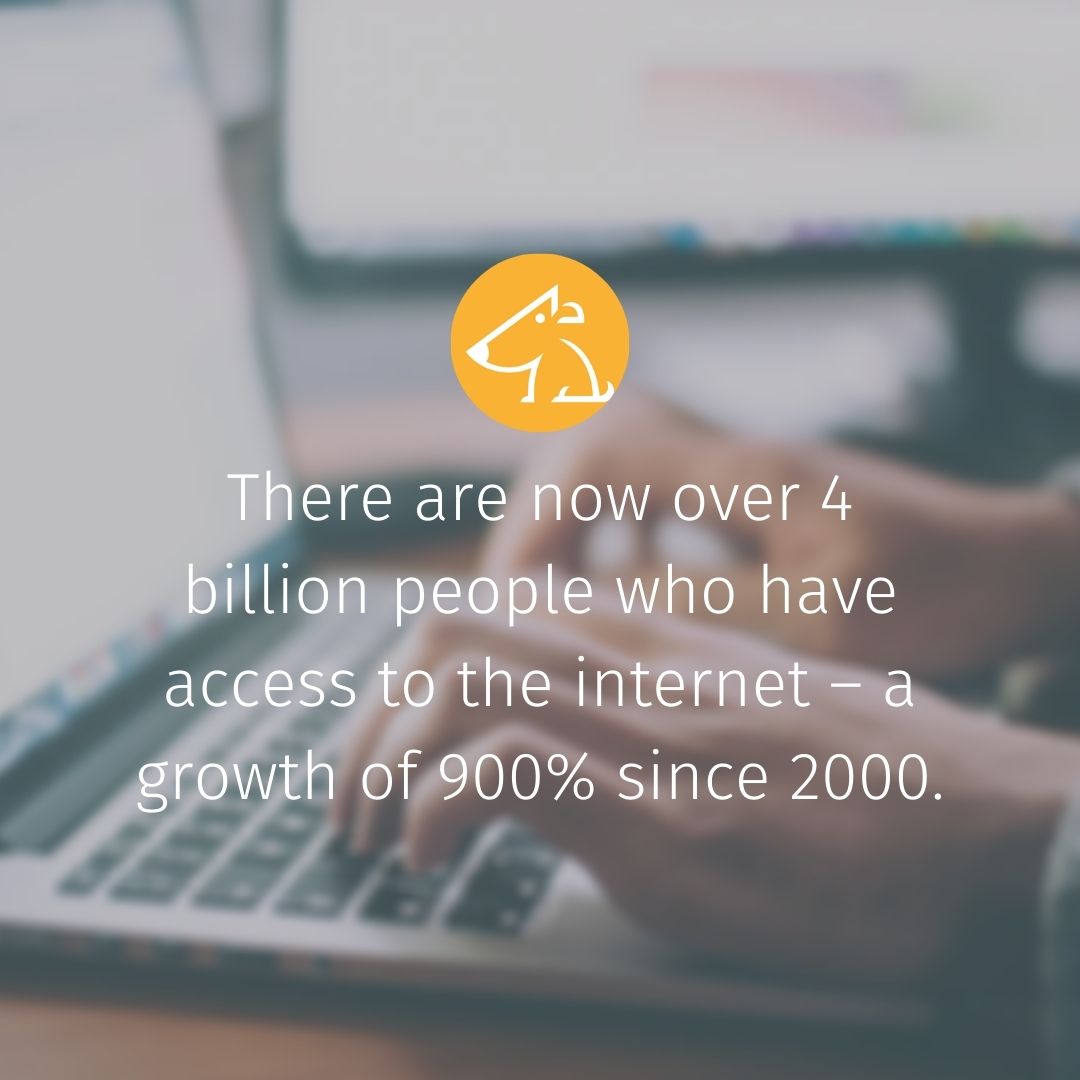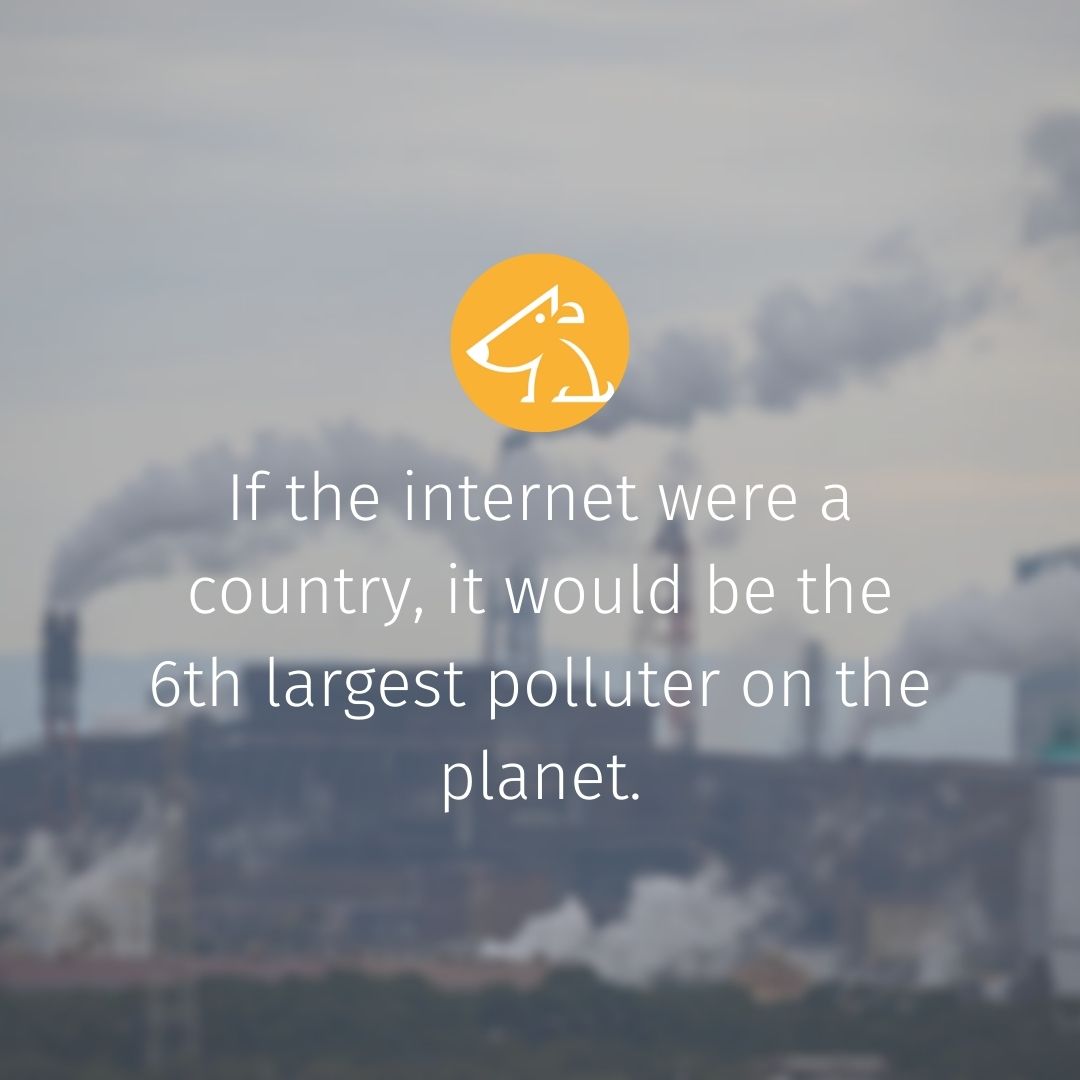


As we step into a new decade, Marketing Manager, Beth investigates the current carbon impact of data centres and looks towards an alternative, brighter future.
The Harlem Shake, planking, the inception of selfies, and a global debate over the colour of a dress are just a few examples of the flash phenomena that took the world by storm between 2010 and 2020. That dress was definitely blue and black!
The internet is an amazing thing. Without the connectivity we have today, ‘viral’ would be a word we’d only ever associate with the spread of modern diseases.
There are now over 4 billion people who have access to the internet – a growth of 900% since 2000. The worldwide web has given us worldwide conversation. It has helped people to connect, share, buy, sell and speak – often simultaneously.
The web has evolved from static content to a truly dynamic space. Video and social media continue to enjoy a meteoric rise in popularity and continue to change the internet landscape.

According to Ofcom, average daily television viewing is down 38 minutes since 2012 as more people turn to the internet for on-demand content. Video accounts for over two-thirds of all internet traffic – Netflix even went as far to say in 2017 that their biggest market competitor was ‘sleep’.
Social media use has increased from 5% of US adults, in 2005, to 72% in 2019, according to the Pew Research Centre. Facebook – once the exclusive reserve of university students in 2005 – is now an entire family affair with parents, grandparents, uncles and aunties revelling in slightly suspect status updates.
The internet promotes the growth of innovation, commerce, and communication. But it’s ever-accelerating use isn’t sustainable.
WiFi is wonderfully invisible. It seems ‘clean’ and harmless. We often forget what happens behind the scenes. Every internet action we take is packetised and delivered across a global network. It travels from A to B via a series of wires and electrical equipment. To cope with the escalating volume of data transfer, companies have built massive data centres.
Data centres are vast temperature controlled warehouses, filled with racks and racks of servers. These server racks are connected by cabling to power distribution systems and are usually constructed with a climate control mechanism, to keep the computers from overheating. They are typically windowless boxes of steel and concrete that are constantly primed and ready. Ready for us to post an Instagram of our perfect poached eggs, send a funny meme to a friend, or Facebook Live stream our family wedding.
Our need to stay connected and to share our lives with one another has resulted in the number of data centres increasing from 500,000 in 2012, to 8 million in 2019. By 2030, it is predicted that data centre energy use could make up 10% of the global electricity supply.
The world is waking up to the environmental impact of air travel, fashion, plastic, and all sorts of other aspects of life. But I think the impact of the internet has slid under the radar.

Consider just the construction and maintenance of data centres. Consider the concrete flooring. The operation of the IT equipment. The cooling mechanisms. It is crazy to me that the number of times Gangnam Style was streamed in 2012 could have powered 67,826 UK homes for a whole year. If the internet were a country, it would be the 6th largest polluter on the planet.
Facebook reportedly generates 4 new petabytes of data per day – that’s 4 million GB of data that is processed by a data centre – every single day. All so we can alert our following that we’ve found a new video of a cat being tickled.
Unenviable records were smashed in the last ten years. Sea level, atmospheric temperature, and ocean acidity all rose at an unprecedented and unhindered rate. We had flash flooding, seemingly endless wildfires and widespread coral bleaching. Most now agree that climate change is a thing, and a thing that will worsen without decisive action.
I graduated with my BSc in Biological Sciences in 2017. It was a degree that had modules largely focused on the climate emergency, so I was immersed in the consequences it would bring if unmitigated.
It is great to see the increasing urgency of the climate change conversation, which has led to successful initiatives, such as the tax on single-use carrier bags, and social media movements, such as ‘meat free Monday’. However, considering the potential emergency, it’s time we evaluate how we use and process data over the internet too.
There are three ways in which the data landscape can clean up its act:
I love the connectivity that my mobile phone and computer gives me. Data centres allow us all to tap into sustainable ideas that can benefit society. The internet is already playing an important and crucial role in promoting the well-being of the planet. Take my university dissertation for example, I embraced the vast reach of social media to communicate the important themes of sustainability and climate change. The irony!
But just because the internet is often out of sight, it should not be out of mind.
For the next decade, I’ll be shifting away from the short sighted gratification of re-watching Friends episodes, which I must have seen 1,000 times before, to embrace more ethical and conscientious internet behaviour.
And with that, please close this blog, avoid sharing it and turn off the notifications on your social media platform…
Do you know what the environmental impact is of your cloud compute? Use the YellowDog Index today and get clarity on the sustainable options available.
 Please upgrade your browser
Please upgrade your browser
You are seeing this because you are using a browser that is not supported. The YellowDog website is built using modern technology and standards. We recommend upgrading your browser with one of the following to properly view our website:
Windows MacPlease note that this is not an exhaustive list of browsers. We also do not intend to recommend a particular manufacturer's browser over another's; only to suggest upgrading to a browser version that is compliant with current standards to give you the best and most secure browsing experience.